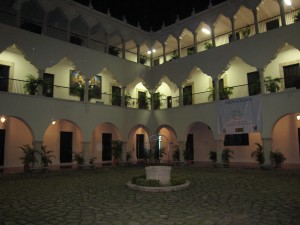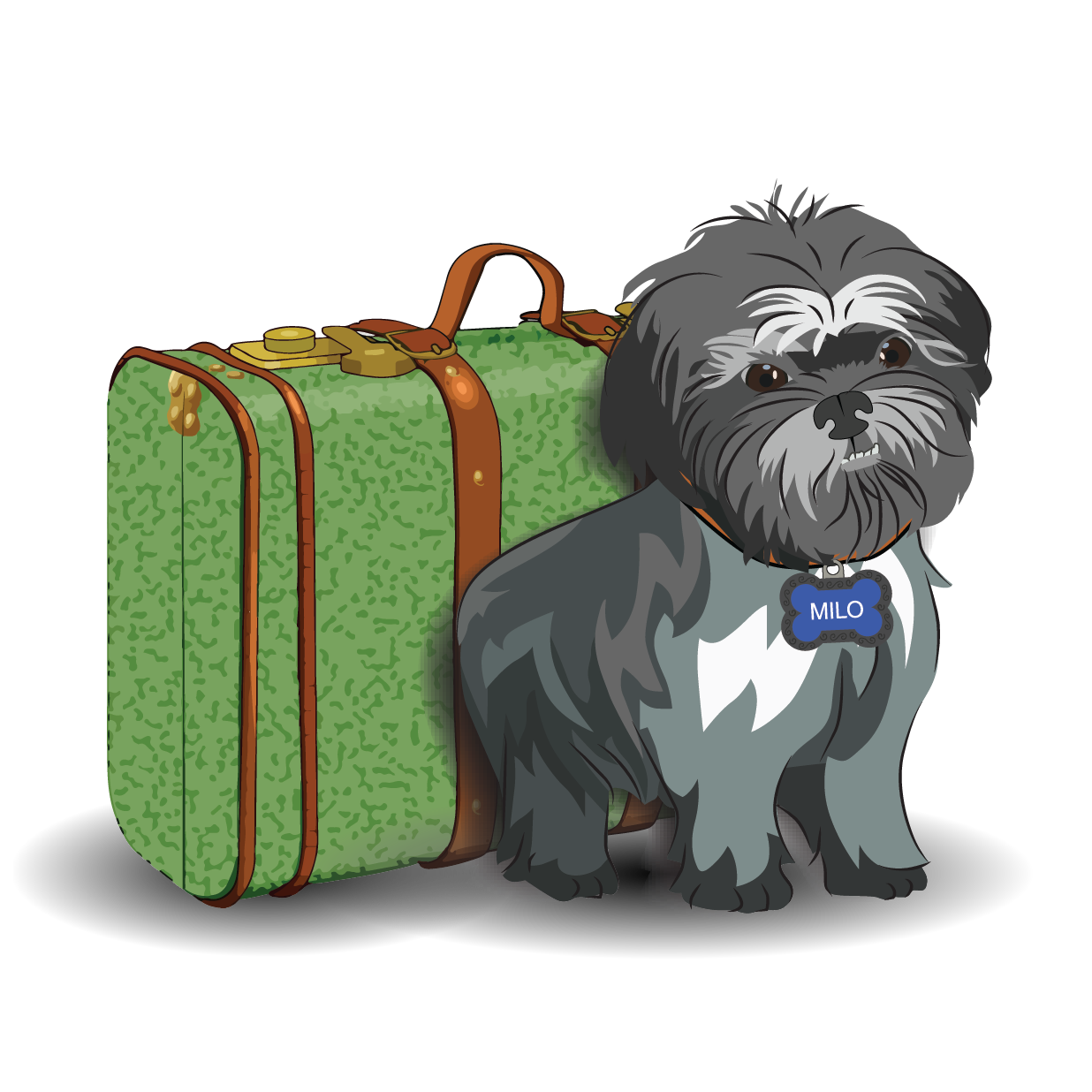Mexico Vacation 2010: Merida (Part 1)
This trip was originally posted in November 2010 on another blog that really wasn’t about travel, but was the only place I had to post it. Now that I finally have a place where it belongs, I’m happy to share the experience again. Check back for Part 2 & 3 in the next couple of days.
 University building in Merida, Mexcio
University building in Merida, Mexcio
I’m on my way back from a week in Mexico and thought I would take advantage of the free WiFi on my Delta flight (compliments of Google Chrome…thank you Google!) to get started on a few posts about the trip.
Part 1 – Merida, Mexico
Renting a Car in a Foreign Country:
This trip really was about visiting my brother who lives in Mahahual, about 4 1/2 hours south of Cancun near the Belize border.
Since the best way to get to Mahahual is to rent a car, we decided to take advantage of the freedom that comes with having your own vehicle. We planned an itinerary that took us first to Merida before heading to Mahahual and then on to Playa del Carmen.
I have to admit that I was a little nervous about renting a car and driving through rural Mexico given my Spanish skills date back to what I remember from 3 years of Junior High Spanish classes. Thankfully, it came back pretty fast and soon became a personal challenge for me to try to communicate as much as possible in Español.
Before the trip, I did my homework. I printed off many many maps and found websites that gave me road signs in both pictures and translations. I am SO glad I found the translation list, as just about every sign we saw was on the list. I learned about topes (speed bumps that are on streets big & small…sometimes marked with signs, sometimes not). I read about military checkpoints, how to get gas (all of the gas stations are full-service government owned Pemex stations) and that driving at night can be treacherous (people, bikes and animals all use the streets at night…plus the speed bumps are much harder to see!).
We actually encountered no problems with the driving, and I highly suggest you give it a try the next time you visit Mexico.
The Road to Merida:
The drive to Merida was uneventful, which is what you want when driving in a foreign country. Even though the toll highway between Cancun and Merida cost us $46, we still think it was a better choice than the local road that goes through over 40 small towns. By avoiding the 80+ topes on the local route, the drive is cut down from 6 hours to 4 hours.
We talked 2 toll booth workers and one gas station attendant into taking US dollars since we hadn’t changed any money into pesos yet (big mistake!) and they don’t take credit cards.
We drove through lots of small towns and hit Merida just as it was getting dark. With a little help from a nice policeman who spoke no English, we managed to find our way through rush hour traffic in the dark to our hotel.
Most of the hotels in Merida have only a handful of rooms and offer unique accommodations. Our hotel had 15 rooms and a charming courtyard with a small pool, a few hammocks and several sitting areas. The front desk even had an old fashioned room key mailbox setup where you could drop off your key (a real one…not a card you swipe) at the front desk when you went out and they would put it in the numbered slot. Imagine an elegant hotel from an old black & white movie and it will be pretty close.
Merida Experience:
Merida is an inland city with about 1 million people. Since all of my prior trips to Mexico had been to beach locations, Merida offered something completely new. This colonial city offers a sophistication with a European flair not found in the tourist filled hotel zones.
Everywhere we went we were surrounded by local residents. We skipped the many museums (just not my thing) and instead spent time exploring the downtown streets.
The small parks every few blocks were filled with residents socializing after they got off work or sitting on a park bench while they played on the internet (every Merida park has free internet for anyone who has a local residential plan, and there were even electrical outlets next to each park bench).
Residents of Merida enjoy celebrating their heritage, and the city has a free outdoor concert at a different park each night of the week.
Though these concerts also offer tourists free nightly entertainment, they are not aimed at tourists. We didn’t see more than a handful of other Americans either night and all of the commentary was in Spanish.
The Monday night show was traditional dancing in the main central Plaza.
Tuesday night was about 7 blocks away from the hotel district through quiet residential & business streets and featured Spanish Big Band music. We felt completely safe walking there in the dark, but took our only taxi ride of the trip back to the hotel for a meager $4.
Mealtime in Merida:
Since the Yucatan peninsula is Mayan country, I chose to make my first meal a traditional Mayan dish, pollo pibil (chicken soaked in juice of sour oranges and spiced with achiote). I’m not sure if it is because the restaurant we chose was aimed at tourists and merely mediocre, or if the dish was simply plainer than I expected, but it pretty much tasted like baked chicken to me.
Our second night we made the mistake of following the advice of another tourist on the choice of restaurant, and then following the advice of the waitress on her favorite dish. The arrachera steak con queso (very tough flank steak covered in cheese) is a dish I won’t be ordering again. Then again, maybe we just picked the wrong restaurant since this site says arrachera can be very tender if it is marinated properly.
But we hit the jackpot with a little pizza place for lunch. I really wish I could remember the name of this tiny cafe that was located on the outskirts of the Centro (the hotel zone). With about 50 pizzas on the menu, I had a tough time choosing. Ultimately I went for something that was different than I would find at home.
Eggplant and pumpkin (zucchini) pizza
Worth a Short Drive:
Neither me or my mom (my traveling companion for this trip) are into art museums, the primary attractions in Merida. After consulting my handy travel guide, we decided to take the short 45 minute drive outside of town to Sotuta de Peón for our one full day in the city.
Sotuta de Peón offers tours of the Hacienda and shows you how sisal rope was produced. The Hacienda was the country home for the wealthy family who owned the plantation and the whole town. They even housed the town jail on the lower level of the main house. The home has only one room set up with a bedroom…everyone else slept in hammocks in a couple of the larger rooms.
After touring the house, we were taken on a demonstration tour to show us how the rope was harvested and made.
Even though we call the rope sisal, it really comes from a plant called henequén. All of the shipments to America and Europe went out through the port of Sisal and the crates heading overseas were stamped “Sisal.” Apparently everyone oversees started calling the product sisal based on the stamps on the crates.
I found the tour fascinating and put together this little video with some footage I shot.
A Different View of Mexico:
The next time you head to Cancun or the Riviera Maya area, consider setting aside a couple of days to visit Merida. It will give you a completely different view of Mexico than you will get at beachside resorts and towns catered to tourists. Two days is probably enough time to soak up the Mayan culture and sophistication this city offers.
See more pictures of Merida and the Mexico trip…
Tomorrow: Part 2 of our Mexico Trip – Mahahual


